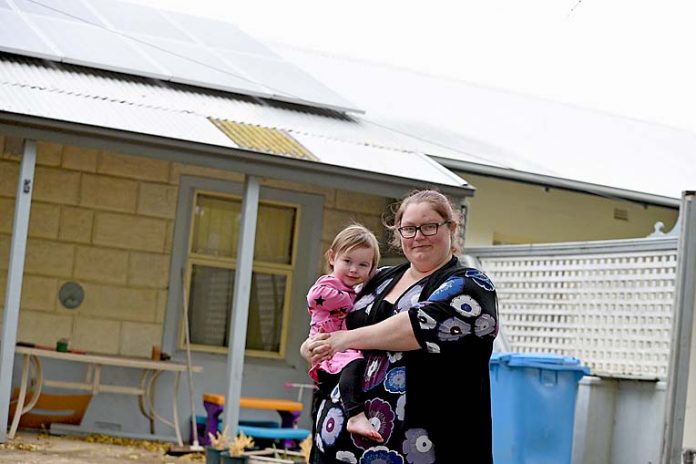

IN South Australia, a state which has the highest electricity costs in the nation, it is not unusual to feel powerless looking at your power bill.
For Mount Gambier resident Simone Western, she has watched her electricity costs skyrocket to more than $1000 per quarter.
With a young family, Ms Western felt as if she had no choice but to reduce her bills, using methods such as turning off appliances at power points and changing light bulbs to more energy efficient options.
Her efforts however were in vain as the costs continued to increase.
“It cut down the costs a little, but not greatly,” she said.
“We are a family of five and my girls have to have the television on at night to sleep, otherwise it is too dark.
“There is not much lighting in our house, so we are constantly having the lights on.
“We also cut down on using the dishwasher and dryer because they were using a lot of electricity.”
Ms Western said she had long considered getting solar panels, but found the installation cost prohibitive.
As bills continued to increase, Ms Western continued her investigation until she found ShineHub’s South Australia Community Solar Program, which includes the exclusive lease-to-own plan.
Ms Western installed a 4.3kW system and a 5.3kWh battery and has since seen her electricity costs fall to around $230 a quarter.
“We had looked into solar but it really was the affordability that was the real struggle,” she said.
“They have got multiple ways of paying for it, so if you cannot pay the $10,000 for the system, you can get it financed.
“With what sunshine we get, all the feed-in tariffs come off our bill and what is left is about $100 to $150 for our solar system.”
Ms Western said the decrease in costs provided her family with more discretionary income and had allowed her and her husband to buy a car.
“I went from nearly paying $200 a fortnight to paying $54 a fortnight and I am always in credit with my electricity,” she said.
“We actually had enough money to buy a Ford Territory which is a great family car and really handy.”







